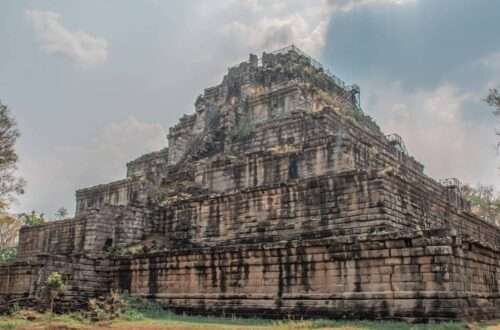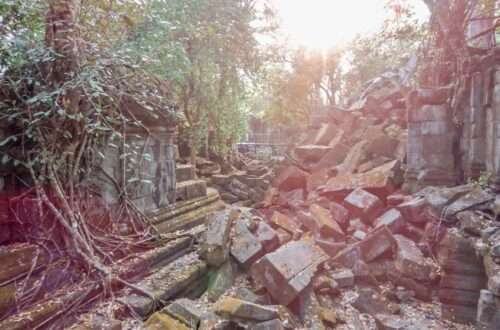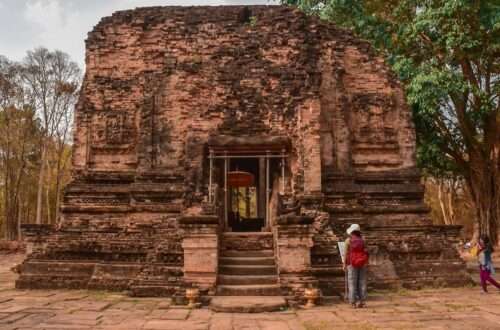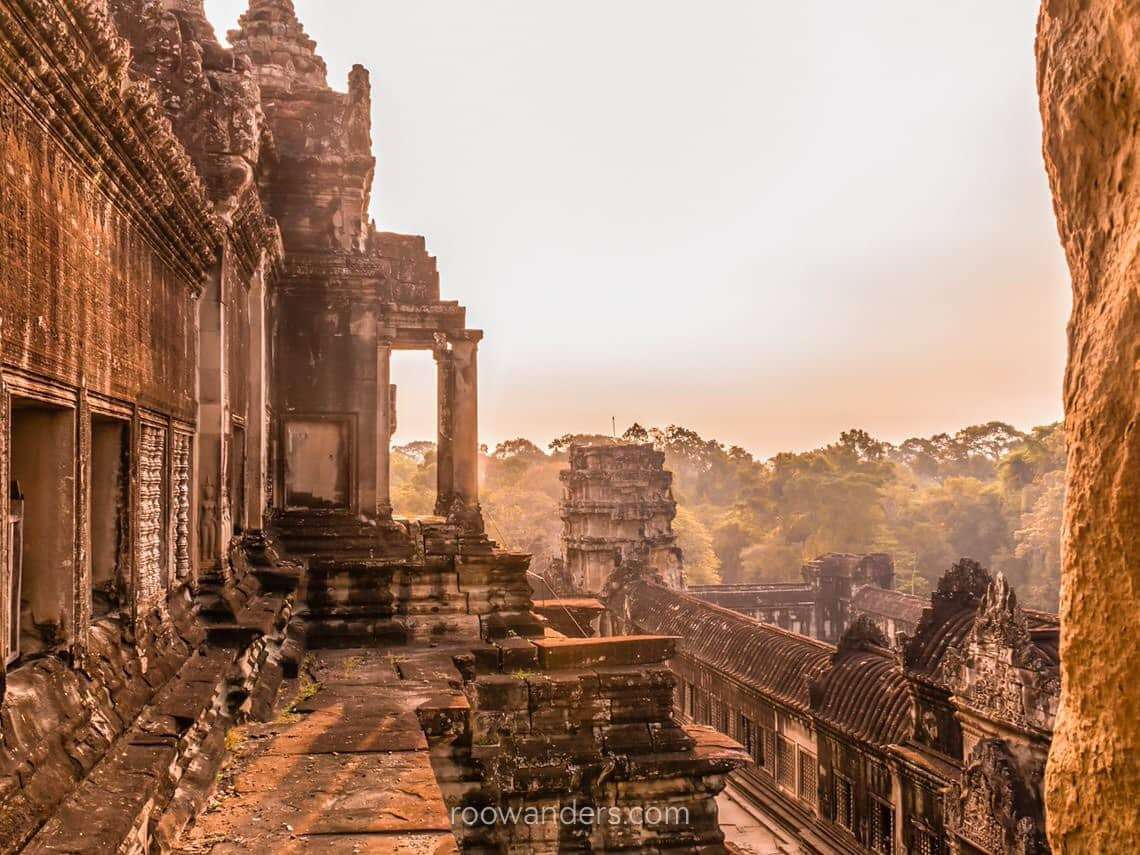
Guide to Cambodia UNESCO Sites
Angkor Wat is just one of the three UNESCO sites in Cambodia.
Where are the other two? Is it difficult and expensive to visit all of them?
Having spent eight days travelling to those three sites plus many more attractions within the vicinity, I can assure you that it is doable without costing a lot. Having deep pockets can shave off more time, but you would miss out on the journey of mingling and living amongst the locals. I backpacked with a company in March 2018, and we have zero knowledge of speaking and understanding the national language. But we did it! – with google translate and body language. The people we met on the journey had no ill intentions, and the streets were safe.
Included in this blog post are the background of the three sites, the transportation to get there, the accommodations we stayed at, and their opening hours and ticket prices. Read on to find out more!
History of the Three Sites
Angkor Wat
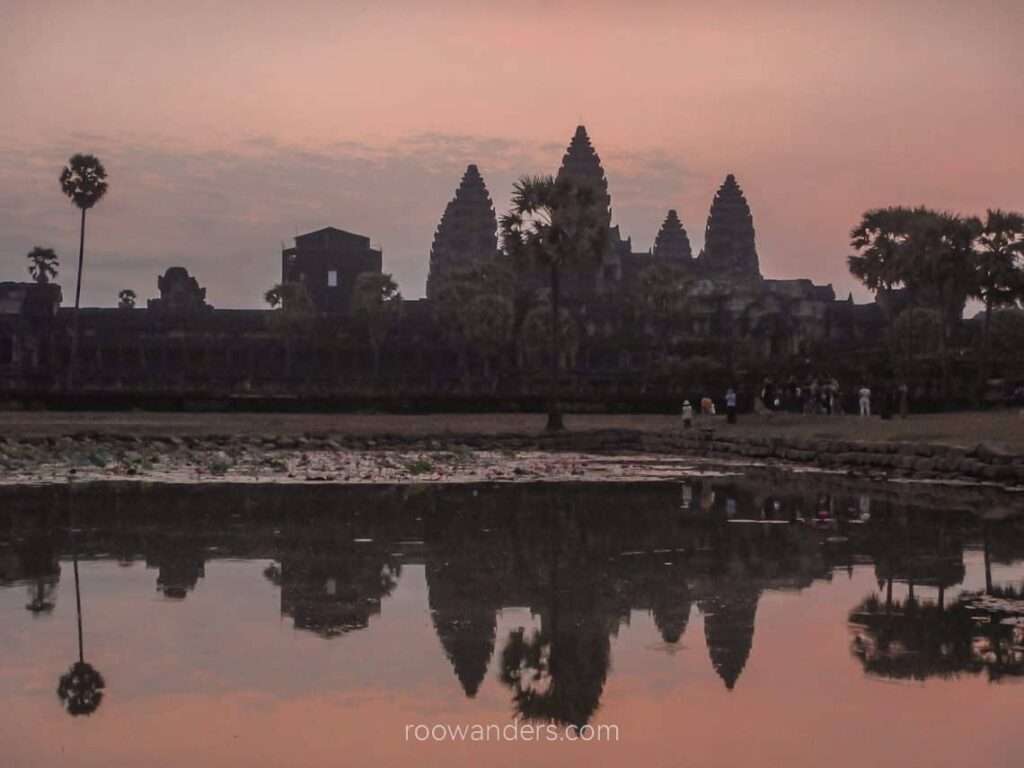
The construction of the icon of Cambodia began with King Suryavarman II in the 12th century. He wanted to have it built as his mausoleum.
But work momentarily stopped for four years when the Cham attacked and took over the capital. Jayavarman VII kicked out the Cham and took control of the situation. He finished the construction of Angkor Wat but converted it from Hinduism to Buddhism.
After his death, his successor brought back Hinduism and defaced thousands of Buddha images. This was later reversed by another king who converted the state to another sect of Buddhism.
The Khmer Empire came to finality with the invading forces from the West – the Siam – and years of bad weather. The capital had, by then, moved to Phnom Penh, where it remains.
Angkor Wat was ‘rediscovered’ by the West in the 19th century, giving it the romantic connotation of a lost city. From then till now, Angkor Wat and its vicinity have something new to be ‘rediscovered’ through the advent of new technology.
It was inscribed as a World Heritage site in December 1992.
Prasat Preah Vihear
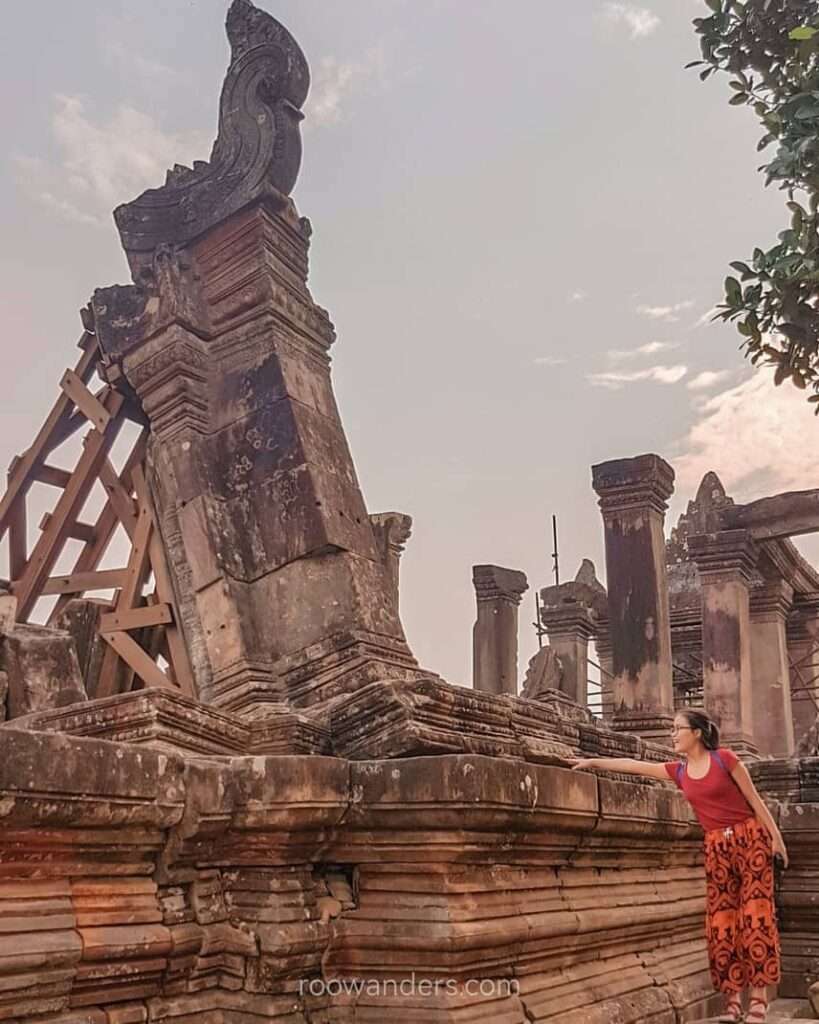
The temple sits on the cliff of the Dângrêk Mountains, near the border of Thailand.
Construction originally began under King Yasovarmamn I, who dedicated it to Shiva. After three centuries of consultation and delay, the temple was finally completed under the stewardship of King Suryavarman II in the 12th century.
The temple was and still is under contestation between Thailand and Cambodia. Multiple clashes have happened, the most recent being in 2011.
Prasat Preah Vihear was registered as a World Heritage site in July 2008.
Sambor Prei Kuk
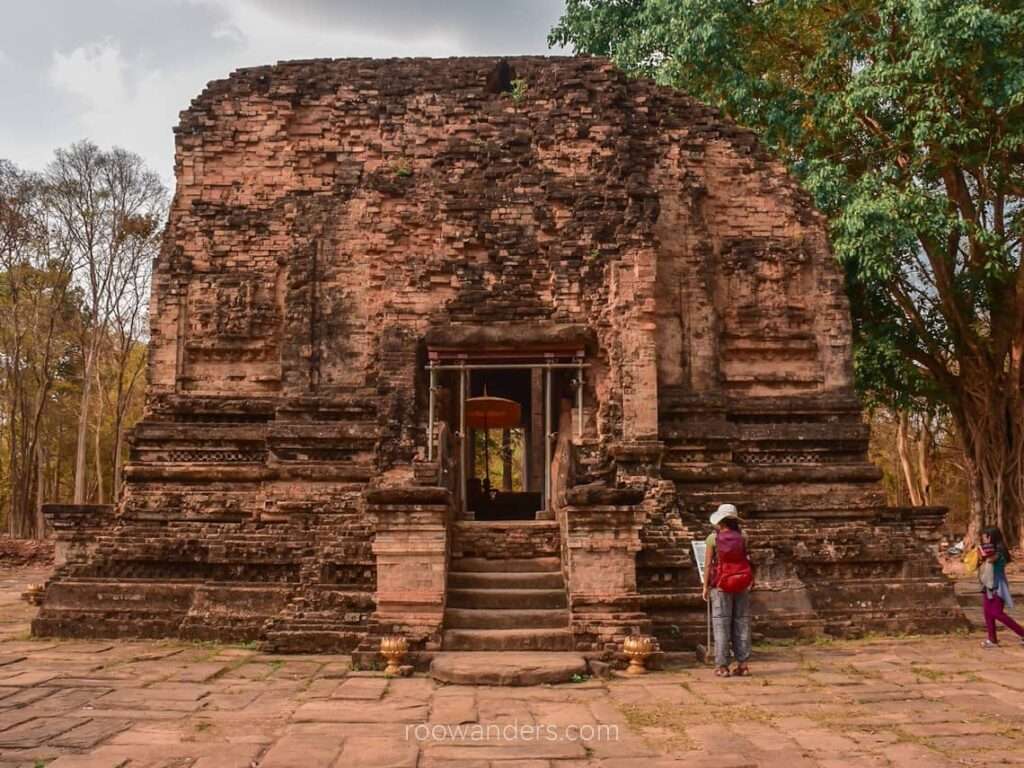
Unlike the first two sites, Sambor Prei Kuk is not a temple but a whole capital known as Isanapura in Sanskrit. It also predates both of them as a pre-Angkorian site.
The numerous temples – at least 140 – built within the walls of Sambor Prei Kuk are divided into three entities dating from different times. South Group ‘S’ is from the early 7th century when the kingdom was founded. North Group ‘N’ comes from different periods. The last group, Central Group ‘C’, is the newest in the cluster.
This site is a recent addition to the World Heritage list for Cambodia. It was inscribed as a World Heritage site in July 2017.
Transport
Assuming we’re starting from Siem Reap.
Angkor Wat
Grab a tuk-tuk from Siem Reap to the Angkor Archaeological Complex. It is as easy as that.
Choose to do one of the circuits across the complex. It cost us about 55 USD for a guide and a tuk-tuk for the small circuit, and USD 37 for a one-day pass to the complex.
Prasat Preah Vihear
This is a lot trickier to visit by yourself via public transport. One-day private car hires to and fro cost at least USD 200.
For budget travellers or those with an exploratory spirit, you would have to take a bus from Siem Reap to Kampong Thom. Check with your hostel for the timings.
Buses run daily from Siem Reap to Kampong Thom, as this is the rest stop for routes between Siem Reap and Phnom Penh. A one-way ticket costs USD 8.
From Kampong Thom, take another bus to Sra’aem, the nearest village to Prasat Preah Vihear. Do not confuse the temple with another town of the same name – Preah Vihear. This bus runs once a day in the late morning from the bus station of Kampong Thom. Ask any tuk-tuk driver or your guesthouse, and they’ll lead you to the bus station. A one-way ticket costs USD 8. The journey took us four hours. By the time you’ve reached Sra’aem, it would have been evening. The journey continues the next morning.
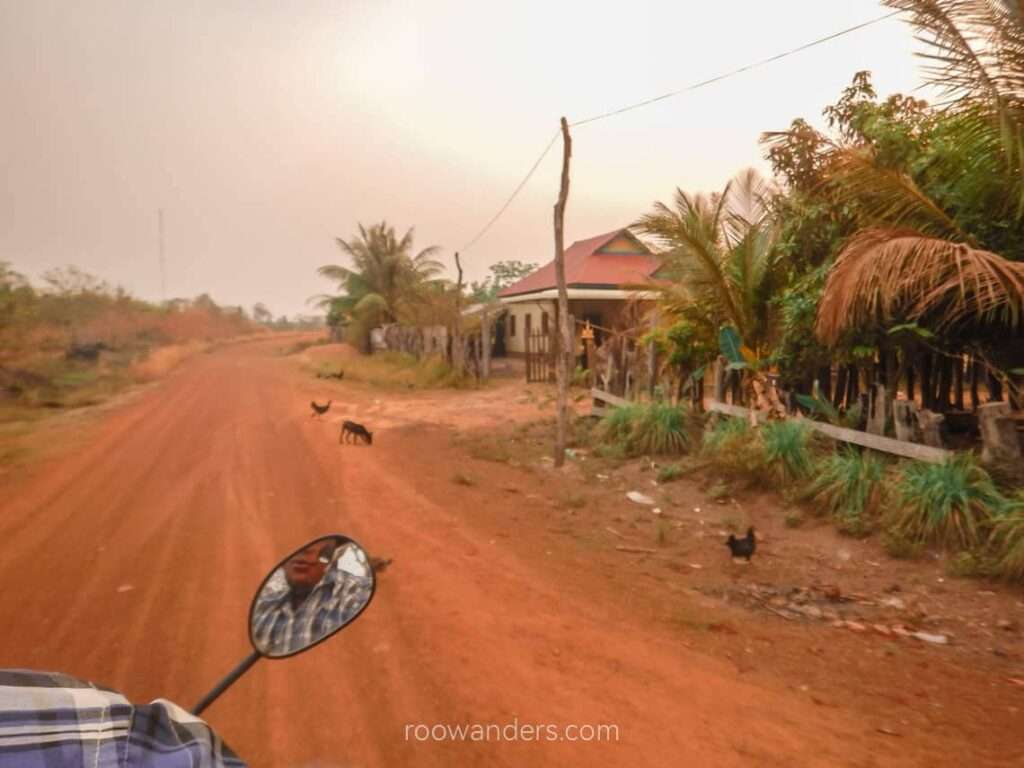
From Sra’aem, you could hire a motorcycle to the temple. It cost us 10 USD each for the return journey. Haggling comes in handy here. The 28 km journey took almost 30 minutes.
Once you’re at the ticket counter, you need to pay another 5 USD each for their jeep up the mountain and 10 USD for the ticket. If there are six of you, you could take their truck for USD 25. Remember your driver!
If you’re heading back to Siem Reap, follow the steps above in reverse from Sra’aem. Or take another bus to visit other parts of Cambodia. There may be another bus connecting the town of Preah Vihear to Siem Reap.
We hired a private driver for our journey back to Siem Reap with stops at Koh Ker and Beng Mealea for 90 USD and were back in Siem Reap by night.
Sambor Prei Kuk
As with the directions above for Prasat Preah Vihear, take the bus from Siem Reap to Kampong Thom. A one-way ticket costs USD 8.
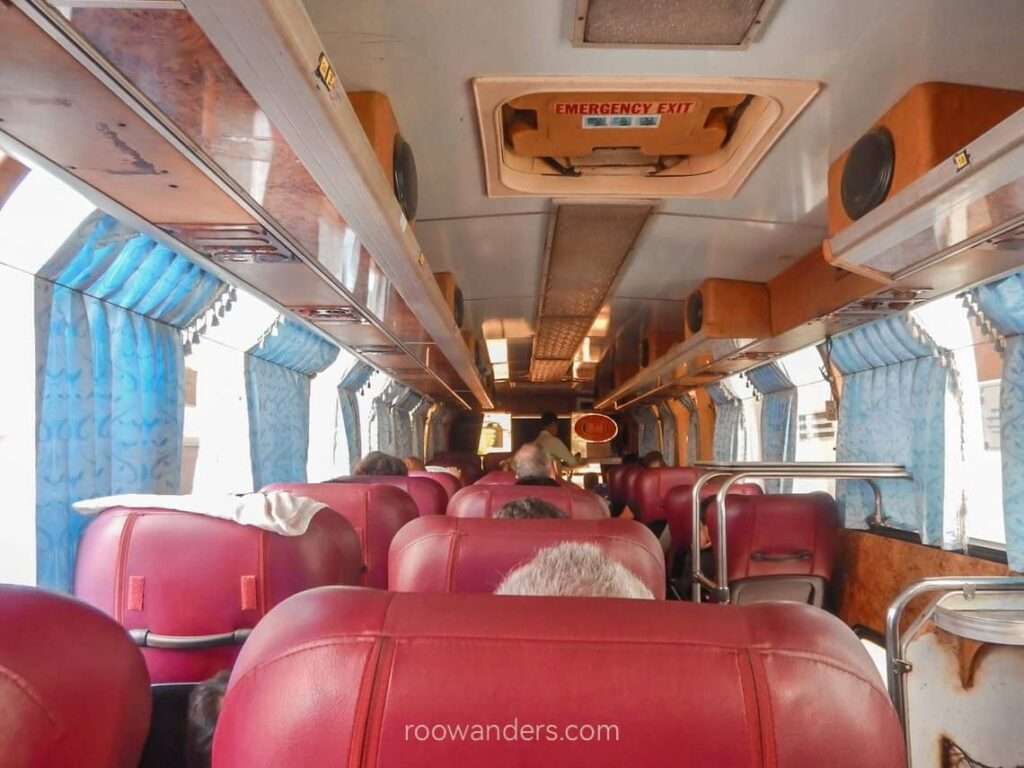
From Kampong Thom, hire a private tuk-tuk driver for about USD 15 to the site, which would take at most an hour. Tickets cost 3 USD back then, but it has since increased to 10 USD after June 2018. Hire a guide at the spot for 6 USD (prices back then), and he would lead you to the different clusters.
Opening Hours
Angkor Wat: 5 AM – 6 PM. The ticket counter at Angkor Archaeological Centre opens from 4.30 AM to 5.30 PM.
Prasat Preah Vihear: 7.30 AM – 5.30 PM. The ticket counter closes by 4 PM.
Sambor Prei Kuk: 7 AM – 5 PM
Accommodation in The Nearest Town
Siem Reap
There are plenty of accommodations to choose from in Siem Reap.
We stayed in Siem Reap Pub Hostel, which was a stone-throw away from the night market, yet comfortably situated in a relatively quiet neighbourhood. There were cheap eateries lined up along the same street. Onederz Hostel, another popular hostel for the young-at-heart, is also on the same avenue.
Sra’aem
Sra’aem is a village with nothing to do; there are only basic guesthouses.
After being dropped off at the roundabout in Sra’aem, pick any of the two roads, and you’ll hit a guesthouse. We stayed in Piseth Pich 2P Guesthouse, the first guesthouse from the street to your left, and paid USD 8 for a fan room with a hot shower. Very limited English was spoken here, but they were able to get us our transport to Prasat Preah Vihear and back to Siem Reap.
The first guesthouse on the other street, Chhouk Tep Guesthouse, is a family-owned entity with a very friendly boss. I would recommend this over 2P.
Kampong Thom
This is a town that breaks the arduous journey between Siem Reap and Phnom Penh.
We stayed in Santepheap Guesthouse, which has a lovely host who can speak basic English and found us a tuk-tuk to Sambor Prei Kuk.
Other Attractions Along The Way
You do not just want to visit just the Angkor Wat in the Angkor complex. There are many other beautiful temples along the way. Depending on your schedule and interest, ask for a small circuit, which covers most of the ‘must-sees’, or the big circuit for obscure temples.
While you’re in Kampong Thom, you could spend half a day at Phnom Santuk, a cultural and natural site with many quirky monuments and grand temples.
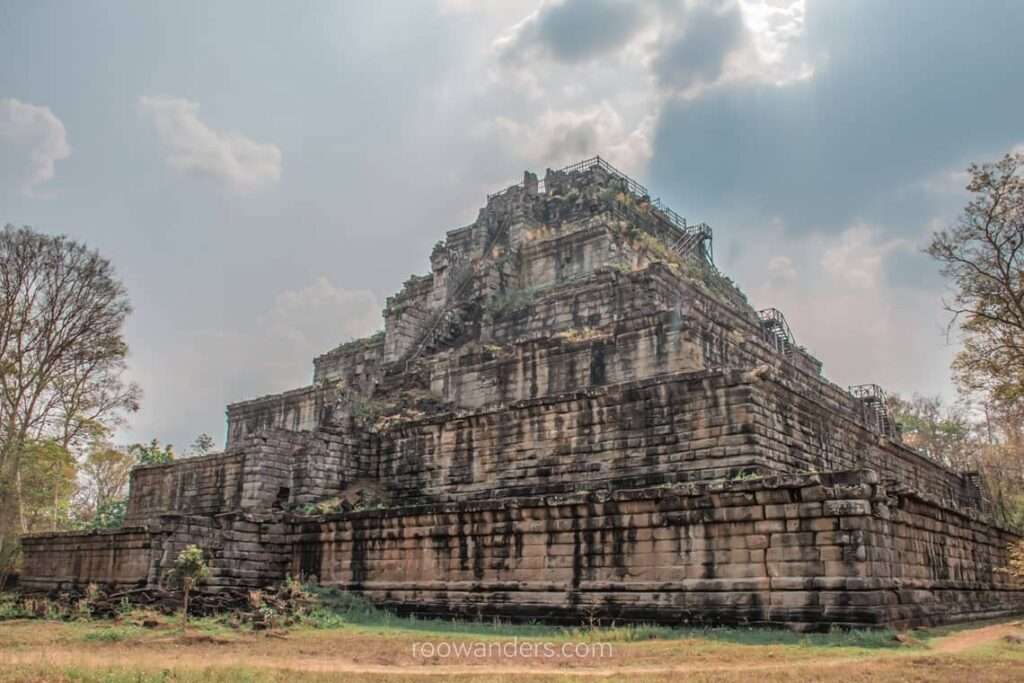
Along the journey between Prasat Preah Vihear and Siem Reap, there are two beautiful sites you must visit – Koh Ker and Beng Mealea.
Key Takeaways
- Have enough USD with you. We did not find any ATMs in Kampong Thom or Sra’aem. As a rough estimate, prepare at least USD 300; we spent about that amount for two, including food, accommodation, transport and attraction costs in 2018.
- Tip your guides. Tip more if they’re beyond expectations. Our guide in Sambor Prei Kuk was fantastic.
- Set clear expectations for your guides or tuk-tuk drivers. Ours like to bring us to expensive places for meals.
- Buy your ticket 5 – 5.30 PM the day before at the Angkor Archaeological Park. Saves you time from queueing early the next morning.
- Be at Angkor Wat first thing in the morning. For the sunrise and also before the tour groups come in at mid-morning.
- Drink lots of water; apply lots of sunblock. Heat is unbearable in the Angkor complex in the afternoon.
- Bring snacks for the Angkor complex visit. Food and drinks sold within are expensive.
- Visit Sambor Prei Kuk either early in the morning or late in the late afternoon. Not as warm and no one’s around.
- Visit Prasat Preah Vihear early in the morning. Before those from Siem Reap arrive. It’s cooler in the morning too. Plus you’ll have the whole day to make the trip back to Siem Reap and visit the other two temple ruins.





